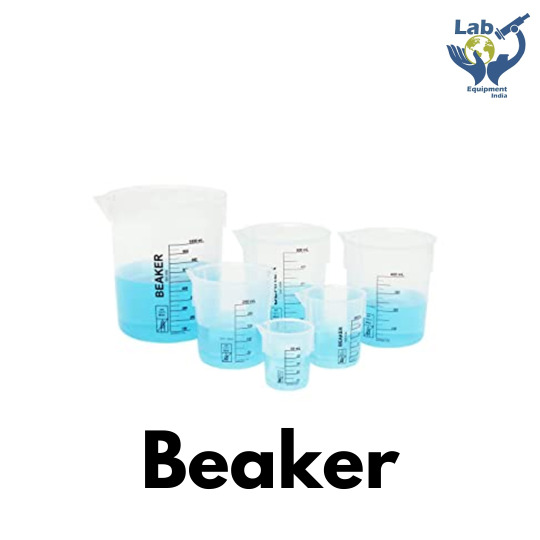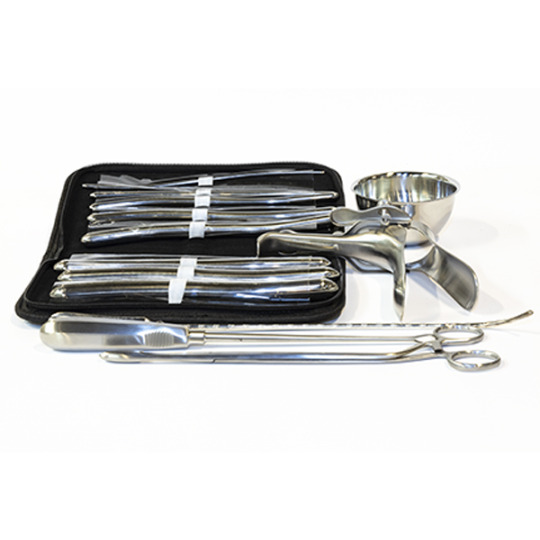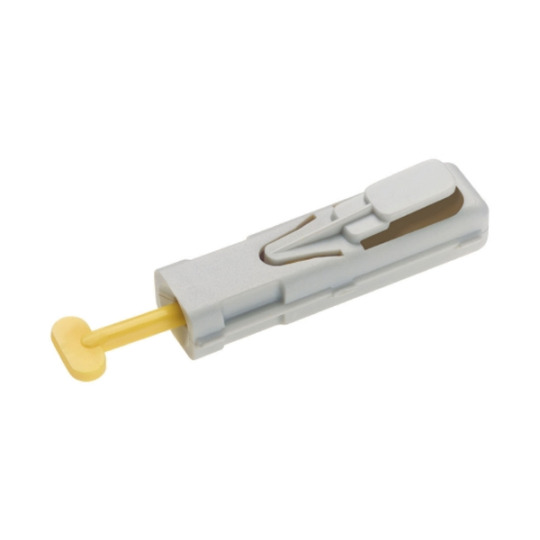Text

Beaker
With spout for easy pouring
Wide hexagonal base
Material polypropylene or equivalent
Capacity: 250 ml
Embossed graduations, beginning 25ml
Chemical and heat-resistant, autoclavable plastic (resistant up to 121 C)
0 notes
Text
Physics Lab Equipment
The Powerful Measurers:
Physics Lab Equipment can measure length with extreme precision, down to the tenth of a millimetre, thanks to the Vernier Caliper and Micrometer Screw Gauge. For experiments requiring dimensions and tolerances, they are essential.
Measuring Tape: Although not as accurate as the previous two, a measuring tape is a useful instrument for quickly and broadly measuring length.
Bringing the Invisible to Light:
Balance: This apparatus provides highly accurate item mass determination. They are essential for studies involving mass, weight, and density, whether they be basic spring balances or complex electronic ones.
Stopwatch: In many Physics Lab Equipment investigations, time is a critical component. Stopwatches are crucial tools for documenting and examining time-dependent events because of their accuracy in measuring elapsed time.
The Thrilling Group:
Multimeter: This multipurpose instrument combines the functions of an ohmmeter, ammeter, and voltmeter to measure resistance, voltage, and current in circuits. It is essential for any electrical and electronic Physics Lab Equipment experiment.
Battery: Batteries, as its name implies, supply the electrical energy required to run different electrical parts of circuits. They are available in a range of shapes and sizes to meet the different requirements of research.
Exposing the Light:
Physics Lab Equipment Lenses and prisms are amazing instruments that bend and control light, enabling us to investigate subjects such as dispersion, reflection, and refraction. They open up a universe of optical phenomena, from straightforward convex lenses to complex prisms.
The Necessary Extras:
The Lab Stand and Clamp are a useful pair that offer a stable surface and assistance for positioning a range of additional equipment, guaranteeing stability and precise measurements.
Springs: The force-displacement connection in springs is distinct. They are employed in Hooke's Law, elasticity, and basic harmonic motion studies
Spectrometer: Nestled atop sturdy platforms, spectrometers stand as sentinels of light, ready to dissect and analyze the spectral fingerprints of matter. With prisms and diffraction gratings at their core, these instruments unravel the intricate dance of photons, revealing the elemental composition and Physics Lab Equipment properties of substances with unparalleled precision.
Oscilloscope: Like silent watchers of the electromagnetic symphony, oscilloscopes stand vigilant, capturing the transient signals that permeate the world of electronics and wave mechanics. Their luminous screens flicker with the dance of voltage and time, offering insights into the frequency, amplitude, and phase of oscillatory phenomena with breathtaking clarity.
Particle Accelerator: Amidst cavernous halls and humming with energy, particle accelerators reign as behemoths of scientific exploration. With magnetic fields and radiofrequency cavities as their tools, these colossal machines propel charged particles to relativistic speeds, unlocking the secrets of the subatomic realm and recreating conditions unseen since the dawn of the cosmos.
Laser System: Within darkened chambers bathed in the glow of coherent light, laser systems stand as beacons of precision and control. Emitting photons with razor-sharp focus and near-monochromatic purity, these instruments manipulate matter on the atomic scale, from trapping atoms in optical lattices to probing the quantum states of individual particles with unparalleled finesse.
Cryogenic Equipment: Amidst clouds of vapor and the chill of liquid nitrogen, cryogenic equipment ushers physicists into the frigid realms where quantum mechanics reigns supreme. With temperatures nearing absolute zero, these devices transform ordinary materials into exotic states of matter, from superfluids to superconductors, unlocking phenomena inaccessible at higher temperatures.
0 notes
Text

Lab Glassware:
Lab glassware is a fundamental component of any scientific laboratory. From beakers and flasks to pipettes and test tubes, these specialized vessels play a vital role in countless experiments and analyses. They are used to mix, measure, heat, cool, and store chemicals and solutions, enabling scientists to conduct a wide range of research and development activities.
Essential Properties of Lab Glassware
Chemical resistance: Lab glassware must be able to withstand the corrosive effects of various chemicals used in experiments. Borosilicate glass, a type of glass with low thermal expansion and high chemical resistance, is the most common material used for lab glassware.
Heat resistance: Many laboratory procedures involve heating or cooling substances. Lab glassware needs to be able to withstand high temperatures without cracking or shattering. Borosilicate glass is again the go-to material due to its excellent heat resistance.
Transparency: Scientists need to be able to see what is happening inside their glassware. Lab glassware is typically made of transparent materials like glass, allowing for clear observation of reactions and solutions.
Accuracy: Many laboratory procedures require precise measurements of volumes and concentrations. Lab glassware is often marked with graduations or scales to ensure accurate measurements. Common Types of Lab Glassware
Beaker: A cylindrical glass vessel used for mixing, storing, and heating liquids.
Flask: A flask is a bulbous glass container with a narrow neck, used for various purposes such as boiling liquids, holding reactions, and storing solutions. Different types of flasks include Erlenmeyer flasks, round-bottom flasks, and volumetric flasks.
Pipette: A long, thin glass tube with a calibrated scale used for accurately transferring small volumes of liquids.
Test tube: A small, cylindrical glass tube used for holding and mixing small volumes of liquids.
Burette: A long, graduated glass tube with a stopcock at the bottom, used for dispensing precise volumes of liquids.
Condenser: A tube with a surrounding jacket used to cool vapors and convert them back into liquids.
Choosing the Right Lab Glassware
The type of lab glassware you need will depend on the specific experiment you are conducting. Consider the following factors when choosing lab glassware:
The chemicals you will be using: Make sure the glassware is compatible with the chemicals you will be working with. The temperature range you will be working in: Choose glassware that can withstand the required temperatures.
The volume of liquid you need to handle: Select glassware with the appropriate capacity. The accuracy of your measurements: Use graduated glassware for precise measurements. Safety and Care of Lab Glassware
Lab glassware is delicate and can break easily. It is important to handle it with care to avoid accidents and injuries. Always wear safety glasses and gloves when working with lab glassware. Wash and clean glassware thoroughly after each use. Store glassware properly to prevent it from getting damaged.
0 notes
Text
Lab Equipment
1. Beakers and Flasks: Foundations of Measurement
Beakers and flasks are iconic symbols of laboratory Equipment work, serving as vessels for holding, mixing, and measuring liquids. Beakers come in various sizes, typically marked with volume gradations for accurate measurement. They are versatile, allowing scientists to perform tasks such as stirring, heating, and pouring. Flasks, on the other hand, often have narrower necks and are used for more precise measurements and reactions where evaporation needs to be minimised. Together, these basic containers form the backbone of liquid handling in labs worldwide.
2. Microscopes: Unlocking the Microcosm
Microscopes are indispensable lab equipment tools for exploring the microscopic world. They enable scientists to magnify objects hundreds or even thousands of times, revealing details that are invisible to the naked eye. From examining cells and microorganisms to analyzing materials at the nanoscale, microscopes play a crucial role in fields such as biology, medicine, materials science, and beyond. With advancements like electron microscopy and confocal microscopy, researchers can delve even deeper into the intricacies of the microcosm.
3. Centrifuges: Separating Powerhouses
Centrifuges harness the principles of centrifugal force to separate substances based on their density. By spinning samples at high speeds, centrifuges cause heavier particles to settle at the bottom while lighter components rise to the top. This process is invaluable for tasks such as isolating DNA, purifying proteins, and separating blood components in medical diagnostics. Modern centrifuges offer a range of capabilities, including variable speed settings, temperature control, and specialized rotors for specific applications.
4. Spectrophotometers: Shedding Light on Chemical Analysis
lab equipment Spectrophotometers are instrumental in quantifying the amount of light absorbed or transmitted by a substance across different wavelengths. This information is used to determine the concentration of analytes in solutions, making spectrophotometry a cornerstone technique in fields like biochemistry, environmental science, and pharmaceuticals. UV-visible spectrophotometers are commonly used for measuring organic compounds, while infrared and atomic absorption spectrophotometers cater to different analytical needs.
5. Incubators and Ovens: Cultivating Conditions
lab equipment and ovens provide controlled environments for cultivating cells, growing cultures, and conducting experiments that require specific temperature and humidity conditions. Incubators are crucial for cell culture work, microbiology research, and molecular biology techniques like PCR (polymerase chain reaction). Ovens, on the other hand, are used for sterilization, drying, and heat treatments in applications ranging from sample preparation to materials testing.
6. Pipettes and Dispensers: Precise Liquid Handling
Pipettes and dispensers are precision instruments used for transferring precise volumes of liquids. Manual pipettes are operated by hand and are available in various formats, including micropipettes for small volumes and multichannel pipettes for high-throughput applications. Automated pipetting systems offer increased efficiency and reproducibility, making them ideal for tasks like serial dilutions, liquid handling in high-throughput screening, and molecular biology workflows.
7. Analytical Balances: Weighing with Precision
Analytical balances provide accurate measurements of mass, essential for tasks like preparing solutions, dosing reagents, and determining the purity of substances. These balances offer high precision, often capable of measuring weights down to the microgram or even nanogram level. They are equipped with features such as draft shields to minimize environmental interference and calibration routines to ensure accuracy.
lab equipment, the workhorses of any laboratory. Beakers, test tubes, and flasks, made from durable glass, are used for mixing, storing, and heating various substances. Pipettes, with their precise markings, ensure accurate measurements of even the smallest volumes. And who can forget the ubiquitous Bunsen burner, providing heat for countless experiments?
Delving deeper:
As we move beyond the basics, we encounter a world of specialized equipment. Microscopes, with their powerful lenses, unveil the unseen world of cells and microorganisms. Centrifuges separate mixtures based on density, while spectrometers analyze the composition of materials. Each piece of equipment is designed for a specific purpose, contributing to the scientific process in its own unique way.
The cutting edge:
Modern science is constantly evolving, and so is the equipment that supports it. Advanced tools like 3D printers and gene sequencers are pushing the boundaries of what’s possible. These sophisticated instruments allow scientists to create complex structures, analyze DNA, and unlock the secrets of life itself.
Beyond the tools:
But lab equipment is more than just tools. They are partners in discovery, silent witnesses to countless experiments and breakthroughs. They represent the dedication and ingenuity of scientists, engineers, and technicians who design, build, and use these instruments to push the frontiers of knowledge.
0 notes
Text
Diesel Driven Generator Set

Diesel Driven Generator Set
Small size, portable diesel engine driven generating set.
Mounted on a sturdy skid frame, with anti-vibration dampers, with four (4) lifting eyes
The generator has an output of 5kVA at 1500rpm, 220V, single-phase, 50Hz, with power factor of 1.0
The alternator is brushless, self excited, self regulated and single bearing type
The fuel tank has a capacity to allow 8 hours normal running, with a lockable fuel tank cap
The control panel is mounted on the generating set and includes two 220V, 16Amp, single phase sockets.
0 notes
Text
Lab glassware

The lab glassware used in laboratories is important for various reasons.
The accurate measurement and movement of liquids require it.
This feature is crucial since a lot of scientific studies need it to be able to withstand aggressive substances as well as high temperatures.
The key to preventing illness is how simple it is to clean and sterilize.
Experts at creating complex lab glassware by hand alone are scientific glass blowers. The glass is typically heated over an open flame to facilitate handling when it is initially shaped into a rod or tube.
What are the fundamentals of lab glassware?
Caution should be exercised while handling lab glassware under pressure or vacuum. To avoid stressing the glass, do not heat glass flasks using an open flame, vacuum, pressure, or any other method.
Lab glassware is glassware that is frequently used in research and laboratory settings. The majority of these products are made of borosilicate glass, which can withstand pressure, extreme heat, and other hard conditions. It is also resistant to chemical corrosion and heat stress.
Beakers are a common type of lab glassware that is used for distillation to heat, mix, and store liquids.
Flasks are employed in several processes in lab glassware, including distillation, reactions, and volumetric measurements.
Small amounts of liquid may be precisely measured and transferred with the use of pipettes.
Funnels: A device used to transfer liquids into narrowly opening containers.
Test tubes are used for observations and small-scale reactions.
Watch glasses are used to cover flasks and beakers and to evaporate liquids.
0 notes
Text
Lab Glassware
The lab glassware used in laboratories is important for various reasons.
The accurate measurement and movement of liquids require it.
This feature is crucial since a lot of scientific studies need it to be able to withstand aggressive substances as well as high temperatures.
The key to preventing illness is how simple it is to clean and sterilize.
Experts at creating complex lab glassware by hand alone are scientific glass blowers. The glass is typically heated over an open flame to facilitate handling when it is initially shaped into a rod or tube.
What are the fundamentals of lab glassware?
Caution should be exercised while handling lab glassware under pressure or vacuum. To avoid stressing the glass, do not heat glass flasks using an open flame, vacuum, pressure, or any other method.
Lab glassware is glassware that is frequently used in research and laboratory settings. The majority of these products are made of borosilicate glass, which can withstand pressure, extreme heat, and other hard conditions. It is also resistant to chemical corrosion and heat stress.
Beakers are a common type of lab glassware that is used for distillation to heat, mix, and store liquids.
Flasks are employed in several processes in lab glassware, including distillation, reactions, and volumetric measurements.
Small amounts of liquid may be precisely measured and transferred with the use of pipettes.
Funnels: A device used to transfer liquids into narrowly opening containers.
Test tubes are used for observations and small-scale reactions.
Watch glasses are used to cover flasks and beakers and to evaporate liquids.
0 notes
Text
Cold Chain Equipment
Cold Chain Equipment
The cold chain is the intricate network that ensures temperature-sensitive products, like pharmaceuticals, vaccines, and food, are kept at precise temperatures throughout their journey, from production to consumption. Maintaining this "cold chain" is vital, as even slight temperature fluctuations can compromise the quality, safety, and efficacy of these products. This is where cold chain equipment comes in, playing a critical role in safeguarding the integrity of these vital goods.
What is Cold Chain Equipment?
Cold chain equipment encompasses a diverse range of tools and technologies used to maintain specific temperature ranges throughout the supply chain. This equipment can be broadly categorized into two types:
Active cold chain equipment: This type actively generates and maintains the desired temperature using refrigeration or freezing mechanisms. Examples include refrigerators, freezers, cold rooms, and refrigerated trucks.
Passive cold chain equipment: This type relies on insulation and temperature-controlled packaging materials to retain the inherent coldness of the product for a specific duration. Examples include insulated containers, ice packs, and gel packs.
The Importance of Cold Chain Equipment
The significance of cold chain equipment extends far beyond simply maintaining temperatures. It plays a crucial role in:
Ensuring product quality and safety: By preventing spoilage and degradation, cold chain equipment safeguards the quality and safety of temperature-sensitive products. This is particularly critical for pharmaceuticals and vaccines, where compromised products can have life-threatening consequences.
Reducing waste: Maintaining proper temperatures minimizes spoilage and waste, leading to increased efficiency and cost savings throughout the supply chain.
Enhancing product efficacy: In the case of pharmaceuticals and vaccines, consistent temperature control ensures their potency and effectiveness.
Facilitating global trade: Cold chain equipment enables the safe and reliable transport of temperature-sensitive products across long distances, fostering international trade and access to essential goods.
Choosing the Right Cold Chain Equipment
Selecting the appropriate cold chain equipment depends on several factors, such as:
The type of product being transported: Different products have varying temperature requirements.
The duration of the journey: The equipment's holding time or "cold life" must be sufficient for the entire transportation period.
The environmental conditions: The equipment's insulation and functionality should be suitable for the anticipated climate.
Cost and budget constraints: Different equipment options come with varying price points.
Investing in Cold Chain Equipment: A Wise Choice
Investing in reliable and efficient cold chain equipment is not just a good practice; it's a necessity. It safeguards the quality and safety of vital products, minimizes waste, and ultimately, protects public health and well-being. By ensuring the smooth flow of temperature-sensitive goods through the supply chain, cold chain equipment plays a vital role in our interconnected world.
So, the next time you bite into a fresh berry or receive a life-saving vaccination, remember the silent heroes of the cold chain – the equipment that keeps these precious products safe and effective every step of the way.
1. Refrigerated Containers:
At the heart of any cold chain operation are refrigerated containers. These specialized containers are designed to maintain a specific temperature range, safeguarding the contents from temperature fluctuations during transit. Whether shipping vaccines across continents or transporting fresh produce to local markets, refrigerated containers serve as the backbone of the cold chain.
2. Temperature Monitoring Systems:
To ensure the integrity of the cold chain, accurate and real-time temperature monitoring is essential. Advanced temperature monitoring systems provide visibility into the conditions within the containers, allowing stakeholders to track and respond to any deviations promptly. These systems often come equipped with alarms and alerts, enabling quick intervention to prevent potential spoilage or damage.
3. Insulation Materials:
Insulation plays a critical role in minimizing temperature fluctuations within the cold chain. Insulated packaging, such as thermal blankets and panels, helps maintain a stable internal temperature, especially during transportation or storage in varying environmental conditions. High-quality insulation materials are essential for safeguarding the products from external heat or cold.
4. Refrigeration Units:
Refrigeration units are the workhorses that regulate the temperature inside cold chain containers. These units come in various forms, including mechanical compressors and advanced refrigeration technologies. The choice of refrigeration unit depends on factors such as the specific temperature requirements of the cargo and the duration of transportation.
5. Data Loggers:
Data loggers are instrumental in recording and storing temperature data throughout the cold chain journey. These devices provide a comprehensive overview of temperature conditions, enabling stakeholders to analyze and optimize the logistics process. The data collected by these loggers also serves as valuable documentation for compliance with regulatory standards.
6. Cold Chain Packaging:
Specialized packaging materials, such as insulated boxes and thermal blankets, further contribute to maintaining the cold chain. These solutions are tailored to the specific needs of different products, ensuring that they are adequately protected from temperature variations and external influences.
0 notes
Text
Surgical Instruments Curettage Set Manufacturer

Surgical Instruments Curettage Set Manufacturer
Kit Contents:-
Dilators, uter, Hegar
Forceps,dressing,Cheron,250mm
Forceps,uterine,Museux,240mm,cvd
Retractor,vaginal,Doyen,45x85mm
Retractor,vaginal,Auvard,38x80mm
Scoop,uterine,Simon,12mm,sharp
Curette, uterine, Sims blunt
Curette,uterine,Sims,12mm,sharp
Sound,uterine,Martin,320mm
Speculum,vaginal,Graves,95x35mm
Bowl, stainless steel,180ml
0 notes
Text
Revolutionising Research: Unveiling the Cutting-Edge Lab Equipment Innovations in India
Revolutionising Research: Unveiling the Cutting-Edge Lab Equipment Innovations in India
In the constantly evolving world of education, maintaining up to date with the newest developments in tools and resources for teachers is essential to creating a productive learning environment. As technology continues to be a major factor in education, finding trustworthy sources for excellent instructional materials is essential. Lab Equipment India is one of such instances of an innovative hub in India. Let's explore the world of innovations in educational supplies and equipment provided by top Indian firms.
1. Smart Classrooms: The Educational Future
Smart classrooms have emerged as the standard of contemporary education, replacing conventional classrooms with technologically advanced learning environments. Leading Indian manufacturers, who offer cutting-edge interactive whiteboards, projectors, and audio-visual aids, are leading this transformation. These tools allow for more dynamic and engaging teaching approaches in addition to raising student engagement levels.
2. Lab Equipment: Creating Curiosity in Science
Practical experience in science labs is essential for a well-rounded education. Prominent producers on Physics Lab Equipment Manufacturer supply a wide selection of lab supplies, guaranteeing that educational institutions are prepared to impart useful knowledge in biology, chemistry, and physics. These producers put quality and safety first when it comes to scientific research, from safety gear to precision tools.
3. Creative Teaching Resources: Going Beyond Conventional Approaches
India's best producers are spearheading the evolution of educational resources that go beyond textbooks. Multimedia tools, educational kits, and interactive learning modules are becoming essential components of the teaching process. In order to provide teaching aids that accommodate a variety of learning styles and increase accessibility and enjoyment of education, Lab Equipment India works with manufacturers who place a high value on creativity and innovation.
4. Ergonomic Classroom Furniture: Harmonizing Comfort and Utility
Leading manufacturers prioritize offering ergonomic and adaptable classroom furniture because they understand how important it is to provide a suitable learning environment. Modular furniture, cozy chairs, and adjustable desks all help create a welcoming environment for students that improves concentration and the educational process as a whole.
5. Digital Education Platforms: Getting Around the Internet
Online learning platforms have become increasingly popular in the age of digital transformation. High school science lab equipment may supply a range of digital solutions, such as e-books, instructional software, and learning management systems according to needs. By enabling teachers to easily incorporate technology into their lesson plans, these systems support blended learning.
6. Cooperation with Academic Institutions: Customized Approaches
One notable feature of the top manufacturers in India is their dedication to working with academic institutions. These producers recognize and work to address the special demands of each academic institution, whether it is through the construction of customized laboratory settings, large orders of instructional materials, or customized solutions.
It is impossible to overestimate the importance of cutting-edge instructional resources and school supplies in the quest of academic achievement. Leading Indian manufacturers, like Lab Equipment India, are essential to this endeavor. These producers are influencing the direction of education in India by adopting cutting-edge technology, placing a high priority on safety, and meeting the various needs of educational institutions.
0 notes
Text
First Aid Kit Manufacturer,Supplier and Exporter in India

Small basic first aid kit designed for treating a range of minor injuries and ailments such as wound dressings or eye infection. The kit can be used in emergencies or domestic settings.
Tape ,adhesive
Bandage, elastic
Bandage ,gauze
Compress ,gauze
Compress,paraffin
Compress,gauze
Pin,safety,medium
Forceps,dressing,standard
Forceps ,artery,Kocher
Scalpel blade,ster,disp
Scissors,Deaver
0 notes
Text
Beaker Manufacturer, Supplier and Exporter in India
With spout for easy pouring
Wide hexagonal base
Material polypropylene or equivalent
Capacity: 250 ml
Embossed graduations, beginning 25ml
Chemical and heat-resistant, autoclavable plastic (resistant up to 121 C)
Contact us Beaker Manufacturer ,and suppliers in India
0 notes
Text

Disposable Lancet Manufacturer
Instant trigger launches spring-based blade
Blade, depth approximately 2.4mm
Single-use disposable
Mechanism prevents reuse
Box of 2x50 lancets
0 notes
Text

School Students Kit Manufacturer
For 40 students and 1 teacher with 42 components packed in 1 lockable metal box. The previous School in a Box was reviewed and the contents revised.
Components:-
Scissors ,all purpose,sharp
Cubes,wood or plast.,coloured,set
Crayon ,wax,packs of 8 colours/BOX
Tape,adhesive,transp
Marker,flipchart,colours
Chalk,assorted colours
Brush,paint,for chalkboard
Duster/wiper for Blackboard
Slate,fibreboard,double-sided
Compass ,plastic, for Blackboard
White pencil for slates,BOX-20
Paint,chalkboard,black
Ruler,plastic,Blackboard,100cm
Set Square, Blackboard
Eraser,soft,for pencil
Pencil sharpener,metal
Box,metal,lockable,for storage
Ruler,plastic,c.30cm,set
Clock,teaching,wood or plastic
Bag, plastic, interlock
Register,A4,squared
Book,exercise,A4,ruled-8mm
Book,exercise,A5,ruled-8mm
Book,exercise,A5,5mm-sqre
Posters, plasticized paper, set
Protractor, plastic for blackboard
Arm Bands, Education, Cyan blue, cloth
Duct tape, 50mm, silver
Users guide School in a Box Kit
0 notes
Text
Laboratory equipment Lab Equipment Manufacturer, Suppliers and Exporter in India
Laboratory equipment manufacturers play a vital role in the scientific community by providing the tools and instruments necessary for research and development. They design, manufacture, and distribute a wide range of products, including glassware, chemicals, and analytical instruments. These products are used in a variety of settings, including research laboratories, universities, and industrial facilities.
Laboratory equipment manufacturers must adhere to strict quality control standards to ensure that their products are safe, reliable, and accurate. They must also be aware of the latest technological advancements in order to provide their customers with the most cutting-edge products.
Some of the most well-known laboratory equipment manufacturers include Thermo Fisher Scientific, Danaher Corporation, and PerkinElmer. These companies offer a wide range of products that are used in a variety of industries. They also have a global presence, with manufacturing facilities and sales offices located around the world.
The laboratory equipment manufacturing industry is a growing market, driven by the increasing demand for research and development. As the scientific community continues to make new discoveries, the need for sophisticated laboratory equipment will only continue to grow.
Microscopes: Explore high-quality microscopes from trusted manufacturers for precise observations in biology and chemistry labs.
Centrifuges: Choose from a range of efficient centrifuges designed by leading manufacturers for accurate separation of substances in your school or college lab.
Spectrophotometers: Enhance your lab experiments with reliable spectrophotometers crafted by industry-leading brands, ensuring accurate analysis of light absorption and emission.
Balances and Scales: Find precision balances and scales from reputable manufacturers to meet the exacting demands of chemistry and physics experiments in educational settings.
Incubators: Create optimal conditions for cell and bacteria cultures with cutting-edge incubators from well-known laboratory equipment providers.
Autoclaves: Ensure safety and sterilization with autoclaves from trusted manufacturers, vital for maintaining a contamination-free environment in educational laboratories.
Fume Hoods: Prioritize safety in your chemistry lab with fume hoods manufactured by top-notch brands, providing effective ventilation and protection.
Laboratory Glassware: Source durable and reliable glassware sets from renowned manufacturers to support a wide range of experiments across various scientific disciplines.
Pipettes: Facilitate precise liquid handling in your lab with pipettes from established manufacturers, known for accuracy and ergonomic design.
Heating Equipment: Opt for state-of-the-art heating equipment from reputable brands to meet the diverse needs of your physics and chemistry experiments.
Safety Cabinets: Prioritize safety with high-quality safety cabinets from leading manufacturers, offering secure storage for chemicals and hazardous materials.
pH Meters: Ensure accurate measurements in your biology and chemistry labs with pH meters manufactured by trusted brands, known for their reliability and precision.
By incorporating these top-notch laboratory equipment options from reputable manufacturers, your school or college lab can create a conducive environment for effective scientific exploration and learning.
4 notes
·
View notes
Text
Astronomy school Lab Equipment Manufacturer, Suppliers and Exporter in India
Astronomy school science equipmentis a broad category that encompasses a wide range of tools and materials used to teach and learn about the universe. Some of the most common pieces of astronomy equipment include telescopes, binoculars, planetariums, globes, and star charts. These tools can be used to observe the night sky, study the constellations, and learn about the different objects in space.
Telescopes are perhaps the most iconic piece of astronomy equipment. They allow us to magnify distant objects in the night sky, making it possible to see details that would otherwise be invisible to the naked eye. Binoculars are another popular astronomy tool, as they provide a wider field of view than telescopes and are easier to use.
Planetariums are specialized theaters that create a realistic simulation of the night sky. They are often used to teach children about astronomy, as they can provide a much more immersive experience than looking at the sky through a telescope. Globes are also a valuable tool for teaching astronomy, as they provide a three-dimensional representation of the Earth and the planets. Star charts are maps of the night sky that show the constellations and other celestial objects. They can be used to help students learn to identify the stars and planets.
In addition to these common pieces of equipment, there are many other specialized tools and materials used in astronomy education. These include spectrometers, which are used to study the light from stars and other objects; filters, which are used to block out unwanted light and improve the visibility of certain objects; and software programs, which can be used to analyze astronomical data.
Astronomy school science equipment is essential for providing students with a hands-on learning experience. By using these tools, students can gain a deeper understanding of the universe and develop an appreciation for the wonders of science. Below is a list of common astronomy school science equipment used in both school and college laboratories:
1.Telescopes:
Refracting telescopes
Reflecting telescopes
Catadioptric telescopes (combination of lenses and mirrors)
2.Mounts and Tripods:
Equatorial mounts
Altazimuth mounts
Dobsonian mounts
3.Eyepieces and Barlow lenses:
Various focal lengths for different magnifications
4.Filters:
Solar filters
Moon filters
Light pollution filters
5.Star Charts and Planispheres:
Celestial maps R
otating star finders
6.Astronomy Software:
Planetarium software
Sky mapping applications
7.Cameras and Imaging Equipment:
Astrophotography cameras
CCD cameras
DSLR cameras with adapters
8.Spectroscopes:
Used for analyzing the spectrum of celestial objects
9.Solar Observing Equipment:
Solar telescopes
Hydrogen-alpha filters for solar viewing
10.Meteorites and Impactites:
Samples for hands-on study
11.Orreries and Models:
Mechanical models of the solar system
12.Globes:
Celestial globes
Terrestrial globes
13.Grating Spectrometers:
Used for detailed spectral analysis
14.Laser Pointers:
for pointing out celestial objects during presentations
15.Microscopes:
for studying meteorite samples or microscopic features of celestial objects
16.Light Meters:
for measuring ambient light pollution
17.Data Loggers:
for recording observations and experiments
18.Educational Kits:
Solar system model kits
Planet and moon models
19.Laser Diodes:
for optical experiments and demonstrations
20.Teaching Charts and Posters: Illustrations of constellations, galaxies, and other astronomical phenomena.
0 notes